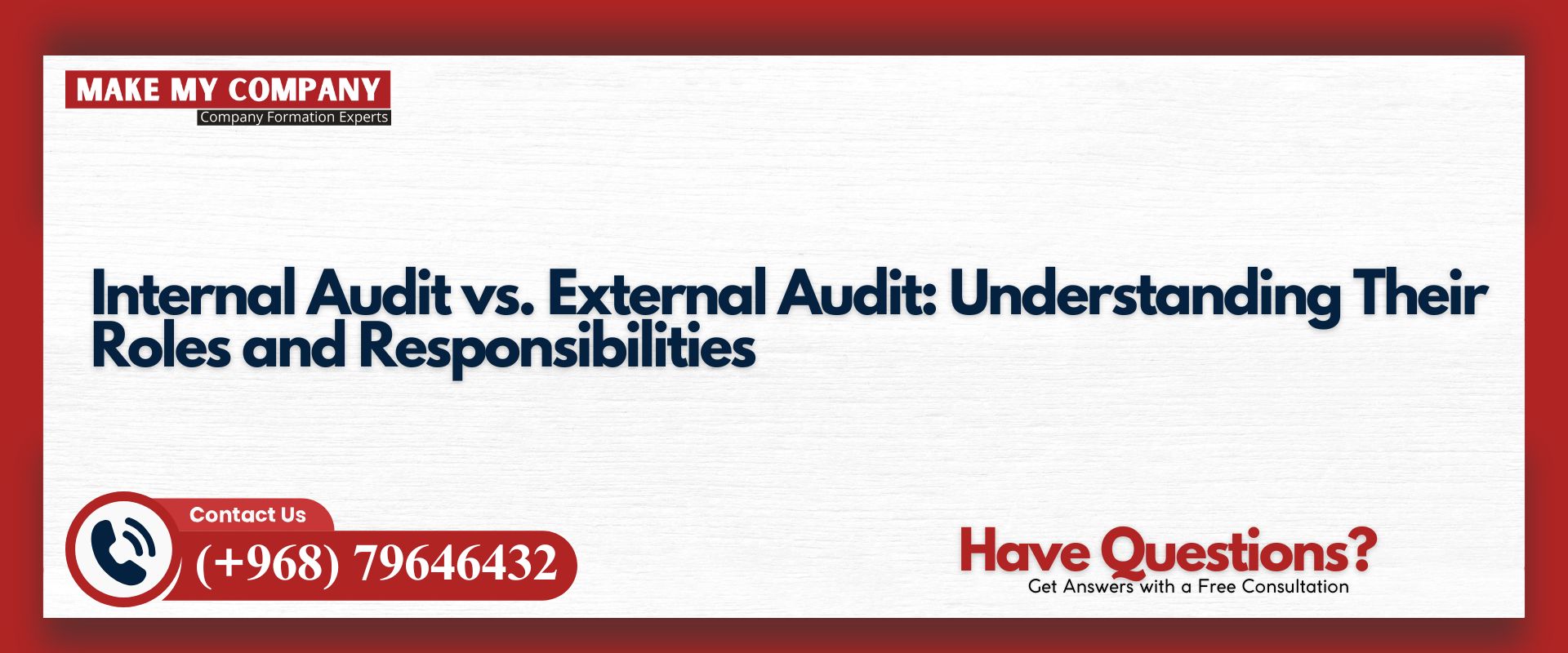Businesses rely on internal audit vs. external audit mechanisms to ensure financial integrity, operational efficiency, and compliance. While both types of audits are crucial, they serve distinct purposes. This guide explores internal audit responsibilities, external audit procedures, their differences, and how they contribute to good governance.
Internal Audit Roles and Objectives Explained
The internal audit roles focus on risk assessment, internal control evaluation, and organizational improvement.
Risk Management and Control Evaluation
Internal audit teams analyze financial and operational risks. They assess internal controls, policies, and processes to prevent fraud or inefficiency.
Operational Efficiency and Process Improvement
Through internal reviews, recommendations are made to streamline procedures, reduce costs, and improve operational performance.
Compliance Monitoring and Governance Support
Internal auditors check that the organization complies with internal policies, regulations, and governance frameworks, preparing management for external scrutiny.
External Audit Responsibilities and Objectives
External audit responsibilities revolve around providing an independent opinion on financial statements.
Validation of Financial Statements
External auditors, often certified CPAs, verify the company’s financial statements, ensuring accuracy, fairness, and compliance with accounting standards.
Independence and Assurance for Stakeholders
Their independence ensures credibility, offering assurance to investors, lenders, regulators, and the public about the company’s financial position.
Regulatory and Statutory Compliance
External audits meet statutory requirements, particularly in jurisdictions requiring audited financial statements for public companies or regulated entities.
Internal Audit vs. External Audit – Key Differences
Understanding the audit differences is essential for businesses looking to implement both effectively.
Purpose, Scope, and Frequency
Internal audits are continuous and broad, covering operations and controls. External audits are periodic (annual) and focus specifically on financial statements.
Reporting Lines and Independence
Internal auditors report to management or the audit committee. External auditors report publicly to shareholders and stakeholders, maintaining full independence from internal management.
Regulatory versus Managerial Focus
Internal audit targets internal efficiency and risk control. External audit targets regulatory compliance and financial statement authenticity.
Audit Standards: Internal vs External
Both internal and external auditors follow professional standards but with different priorities.
Internal Audit Standards (IIA Guidelines)
Internal audits follow the International Standards for the Professional Practice of Internal Auditing (IIA), emphasizing risk-based planning, governance assurance, and internal controls assessment.
External Audit Standards (ISA or Local GAAP)
External audits comply with International Standards on Auditing (ISA) or local equivalents, ensuring financial reporting accuracy, transparency, and stakeholder confidence.
Benefits of Internal and External Audits for Businesses
Regular audit activity brings strategic value through audit process benefits.
Enhanced Controls and Risk Reduction
Internal audits identify control gaps early. Together with external validation, they reduce operational and financial risks.
Credibility with Regulators and Investors
External audits build trust in financial statements, essential for credibility with lenders, shareholders, and regulators.
Strategic Improvements and Cost Savings
Internal audit findings lead to better processes. External audit reviews may identify areas needing improvement or cost containment indirectly.
Audit Reporting Roles: Internal vs External
Clear reporting helps organizations act on audit findings.
Internal Audit Reporting Process
Draft reports are shared with management; final reports go to the audit committee. Recommendations are tracked and followed up.
External Audit Opinion and Auditor’s Report
External auditors issue a formal opinion (unqualified, qualified, adverse, or disclaimer) that is included in annual financial statements, with a public summary of findings.
Internal Audit vs External Audit in Oman
In Oman, both audit types have specific roles under local regulation.
Regulatory Environment in Oman
Oman requires annual external audits for registered companies under the Commercial Companies Law. Internal audits are mandatory for government entities and public joint-stock companies.
Practical Application for Omani Businesses
Companies may use internal audit to prepare for external audit compliance. Internal reviews help meet local standards on corporate governance, SOX-like controls (where applicable), and statutory compliance.
Integration Between Internal and External Audits
Internal audits reduce external audit effort by addressing control weaknesses ahead of formal financial reviews. In Oman, this synergy supports smoother audit cycles.
Implementation Best Practices for Internal and External Audit Programs
Follow these recommendations to apply audit frameworks effectively.
Risk-Based Planning and Coordination
Align internal audit schedule with external audit timetable to avoid duplication. Use risk assessments to prioritize internal reviews.
Clear Communication and Remediation Tracking
Maintain audit logs, track management responses, and monitor resolution of internal audit findings to support smoother external audit and compliance.
Staff Training and Governance Awareness
Train staff on audit expectations, internal controls, and compliance. A well-informed team supports both audit functions effectively.
Conclusion
Both internal audit vs. external audit serve distinct yet complementary roles. Internal auditors enhance operations, compliance, and governance, while external auditors provide independent assurance on financial integrity. Businesses in Oman—and beyond—benefit when these two audit types are implemented in harmony. Proper coordination, risk planning, and documentation ensure accurate reporting, regulatory compliance, and improved efficiency. Whether you’re a public company or private SME, establishing robust internal audit programs alongside mandatory external audits is wise. To set up effective audit functions or stay compliant under Omani standards, consider guidance from Business Setup Consultants in Oman—they can help you align audit frameworks, governance processes, and legal compliance effectively.
FAQs
What’s the main difference between internal audit and external audit?
Internal audits focus on internal controls and risk, conducted continuously. External audits focus on validating financial statements annually and providing assurance to external stakeholders.
Is an internal audit legally required in Oman?
Internal audits are mandatory for public joint-stock companies and government bodies; private companies may choose to adopt internal audit for internal control strength or to support external audit.
How often should internal audits be conducted?
Best practice is a risk-based, continuous program, with major areas reviewed yearly. External audits typically occur annually after year-end closing.
Can external auditors use internal audit work?
Yes. External auditors may rely on internal work if it meets quality standards, reducing their efforts in those areas.
Does Saudi law require external audits?
Not relevant here—but in Oman, annual external audits are mandatory for all registered companies under commercial law.
Who do internal auditors report to?
They typically report to senior management and/or an audit committee or board.
What are common internal audit objections?
Weak internal controls, incomplete risk assessments, unaddressed findings, and insufficient documentation may be flagged.
Can a business have only internal audit?
For private SMEs, internal audit alone is acceptable. Publicly listed or regulated businesses require external audit by law.
How long does an external audit take?
Usually a few weeks to a couple of months, depending on company size and complexity; internal audit occurs continuously.
How do internal audit findings affect external audits?
Well-documented internal findings can streamline external audits by reducing redundant testing and clarifying control effectiveness.









